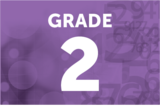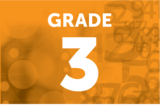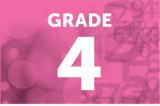
CSDE Model Curricula Quick Start GuideEquitable and Inclusive Curriculum The CSDE believes in providing a set of conditions where learners are repositioned at the center of curricula planning and design. Curricula, from a culturally responsive perspective, require intentional planning for diversity, equity, and inclusion in the development of units and implementation of lessons. It is critical to develop a learning environment that is relevant to and reflective of students’ social, cultural, and linguistic experiences to effectively connect their culturally and community-based knowledge to the class. Begin by connecting what is known about students’ cognitive and interdisciplinary diversity to the learning of the unit. Opposed to starting instructional planning with gaps in students’ knowledge, plan from an asset-based perspective by starting from students’ strengths. In doing so, curricula’s implementation will be grounded in instruction that engages, motivates, and supports the intellectual capacity of all students.Course Description: Grade K Computer ScienceStudents will develop a common foundation to understand computer science concepts. They will develop the understanding of these concepts through “play” and experimentation. In Kindergarten, students will learn to program using commands like loops and events. Upon completion of this course students will have an understanding of: Digital Citizenship Sequencing Loops Events Aligned Core Resources: The selection of core resources is a local decision. Ensuring alignment of resources to the standards is critical for success. The CSDE has identified Code.org as a highly aligned core resource after a rigorous review process. Additional Course Information: This course is best implemented through a combination of “plugged” and “unplugged” activities. This course also teaches students to meaningfully collaborate with others, investigate different problem-solving techniques, and persist in the face of challenges. Habits of Mind/SEIH/Transferable Skills Addressed in the Course: This course is built around a core set of student practices. These practices are high-level skills and dispositions that students should develop. Therefore, the following should be addressed throughout the course: Problem Solving Persistence Creativity Collaboration Communication Figure 5.2: K-12 Computer Science Framework. (2016). Retrieved from http://www.k12cs.orgVocabulary:Vocabulary is a way to provide opportunities for students to use academic and content language to communicate about how they solved a problem, describe their reasoning, and demonstrate understanding. Vocabulary is inclusive of key words and phrases. Vocabulary work in computer science should include words that are traditionally used and regularly appear in academic language as well as words that are specific to the discipline.Grade K Computer Science VocabularyAssessment:Various types of assessment guide teaching and learning. The goal of assessment is to understand student progress and identify learning evidence relative to the content standards. While the Grade K Computer Science Course includes an end of course project, formative assessment practices should be utilized throughout each unit. Interdisciplinary Connections:Computer Science (CS) in Kindergarten can be integrated within the curriculum of other content areas or offered as a ‘standalone’ course, depending on the school’s program. This flexible implementation allows schools the choice to determine how they will ensure that all students will have the opportunity to learn CS. The followings tasks provide connections between learning computer science and other subjects enabling computer science to be taught through an integrated approach. For a 'standalone' course approach see the units below.ELA Connections Spelling with Bee Code.orgCCSS.ELA-LITERACY.RF.K.1.B- Recognize that spoken words are represented in written language by specific sequences of letters.CCSS.ELA-LITERACY.RF.K.1.D- Recognize and name all upper- and lowercase letters of the alphabet. Patterns and Rhyming Tennessee Department of Education and Tennessee STEM Innovation Network (TSIN) CCSS.ELA-LITERACY.RF.K.2.A Recognize and produce rhyming words.Math Connections Counting with Laurel Code.orgK.CC.B.4 - Understand the relationship between numbers and quantities; connect counting to cardinality.K.OA.A.1 - Represent addition and subtraction with objects, fingers, mental images, drawings2, sounds (e.g., claps), acting out situations, verbal explanations, expressions, or equations.
- Subject:
- Applied Science
- Computer Science
- Material Type:
- Full Course
- Provider:
- CT State Department of Education
- Provider Set:
- CSDE - Public
- Date Added:
- 06/07/2023






